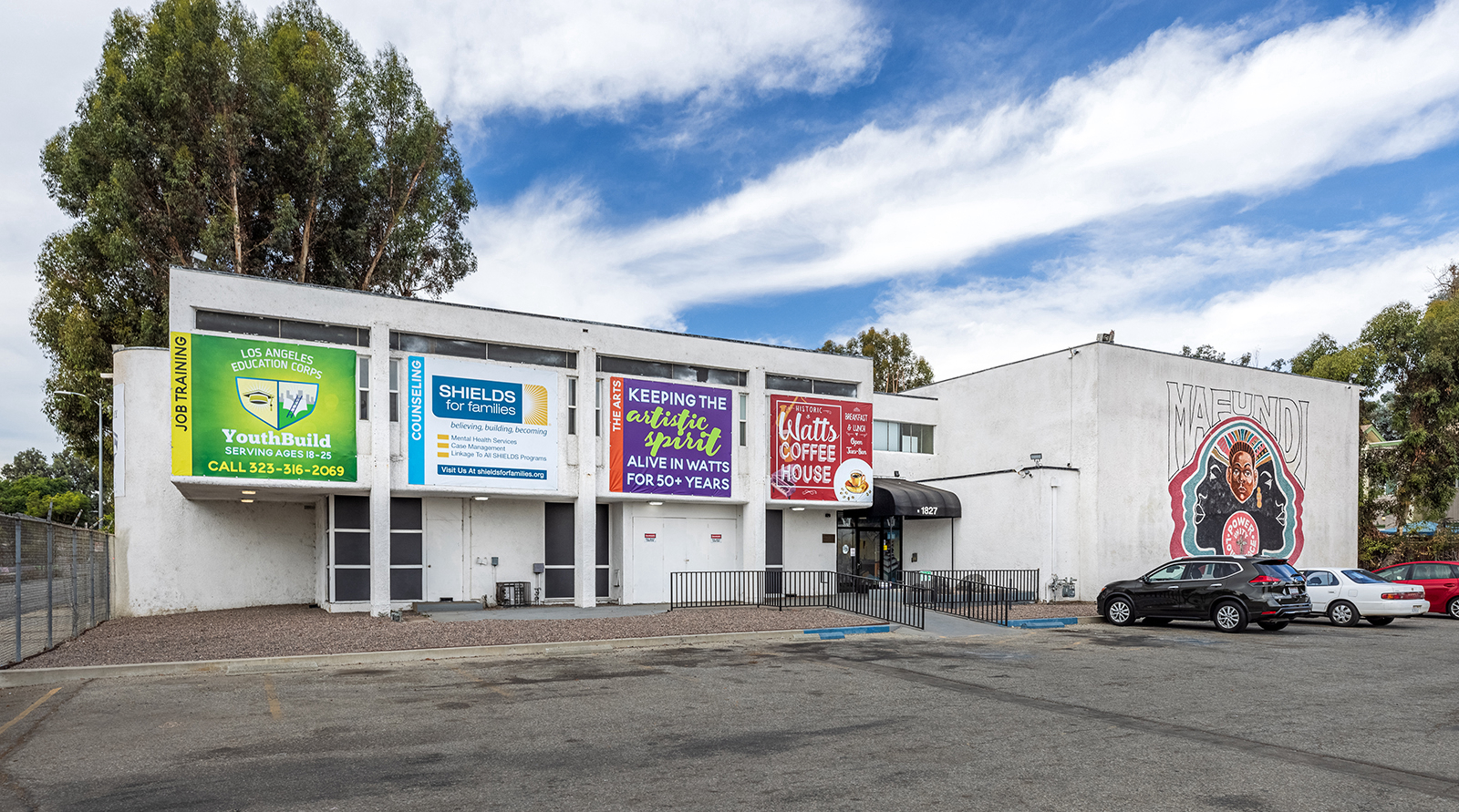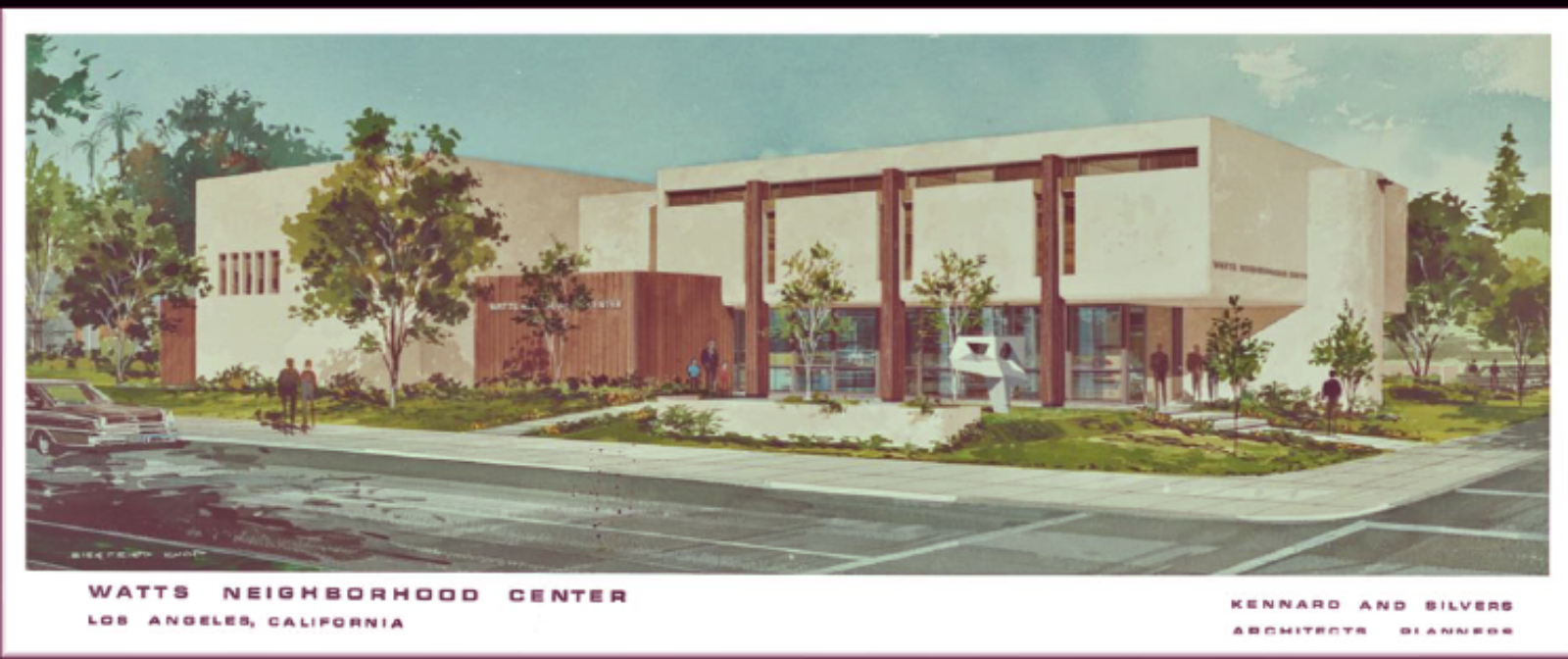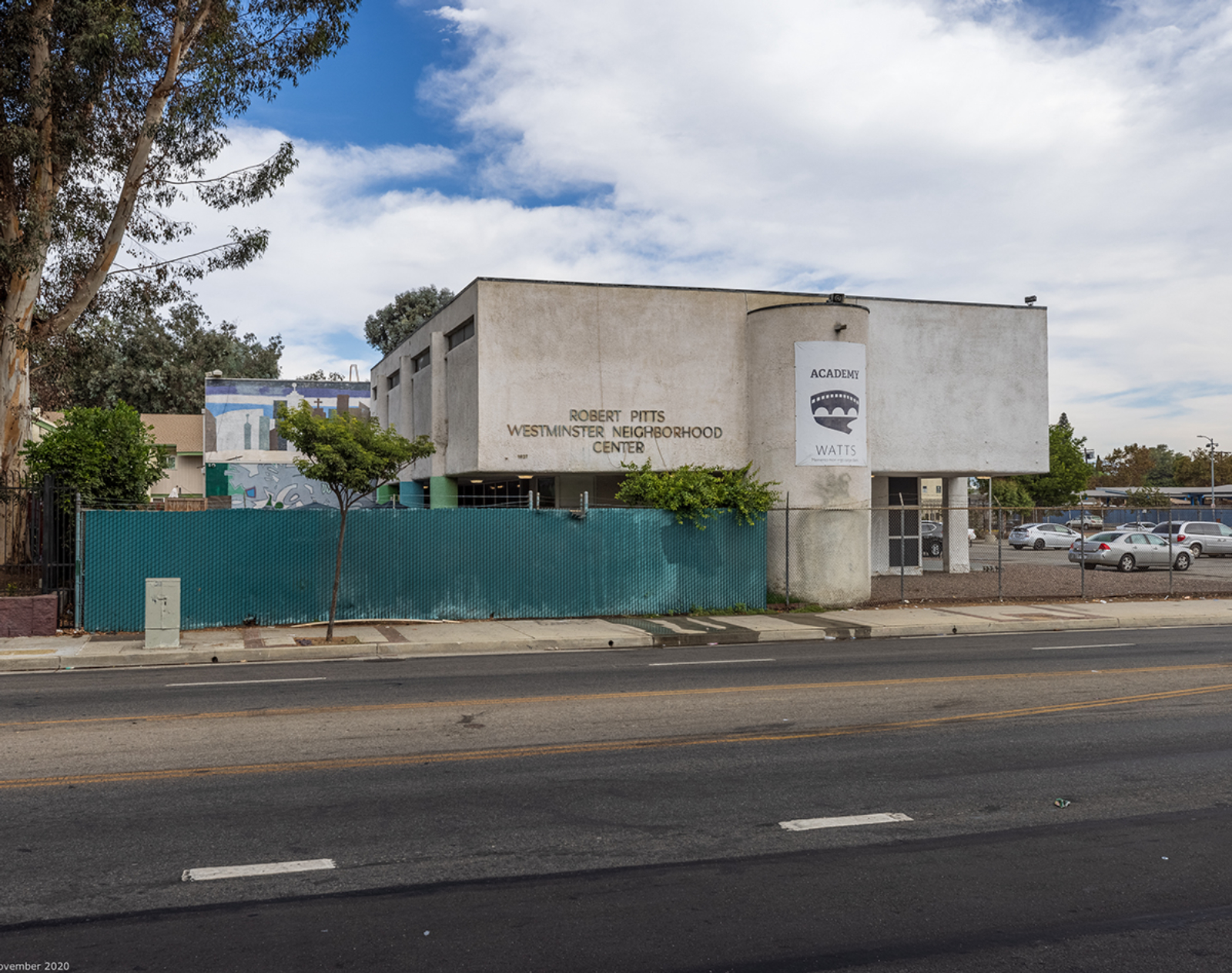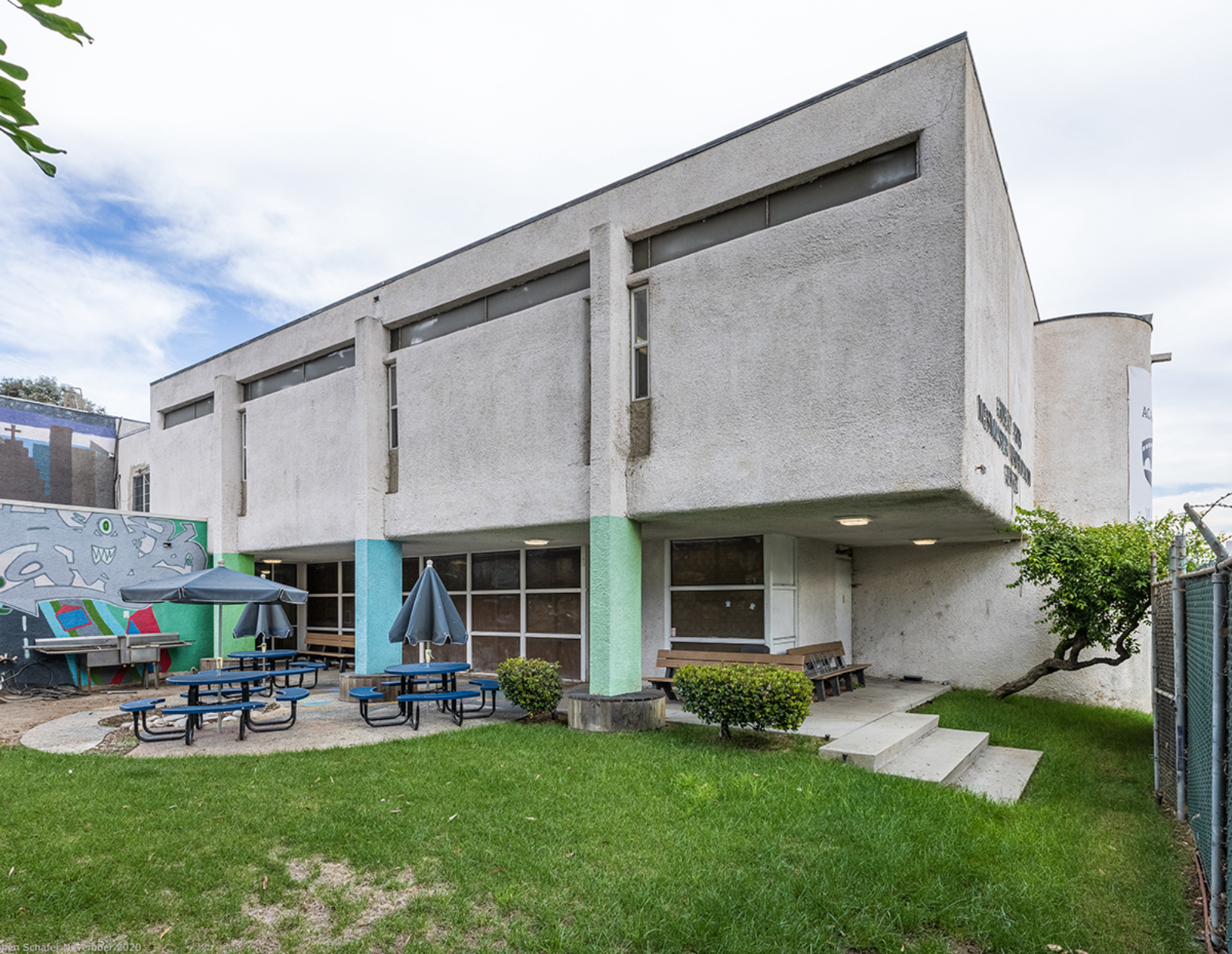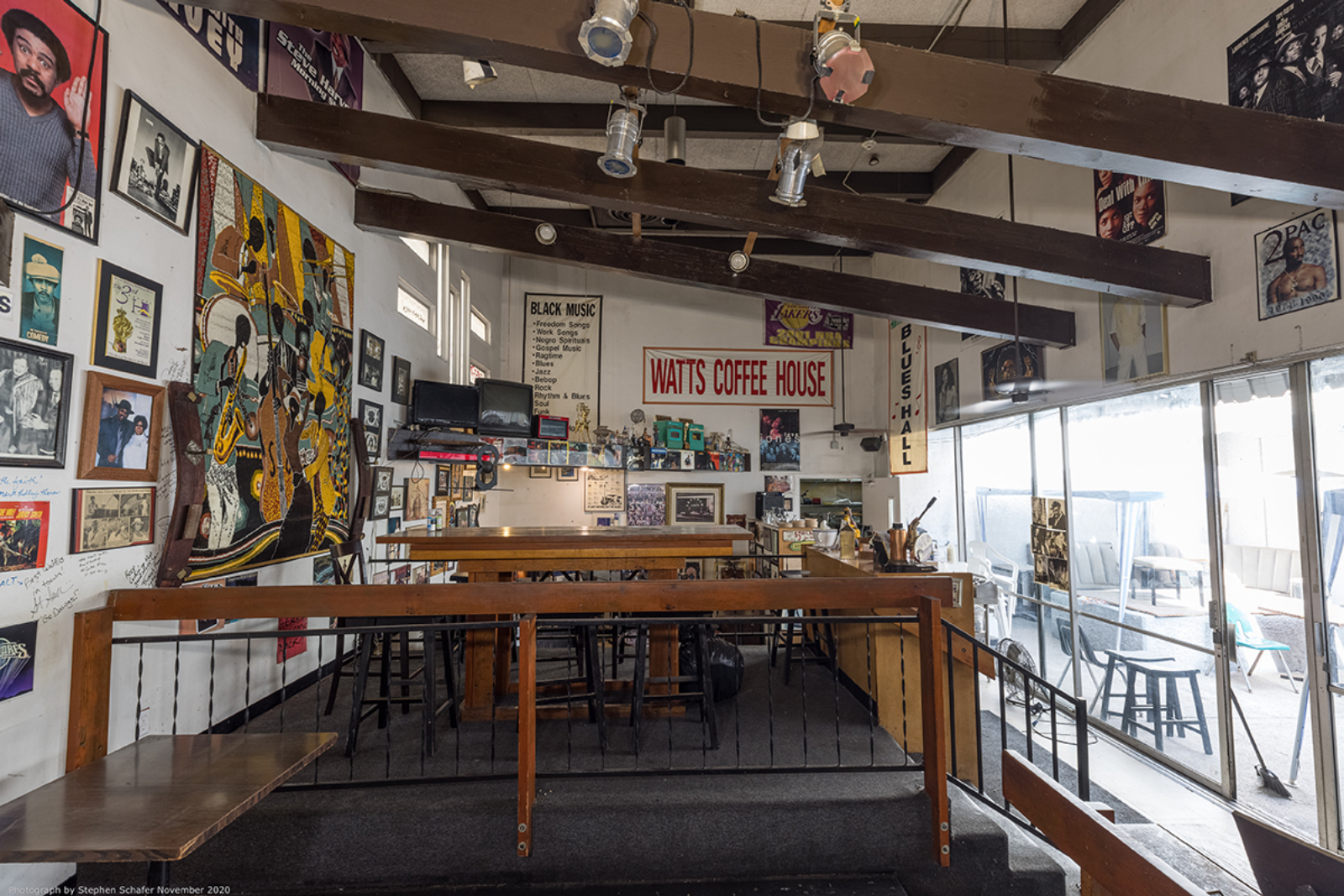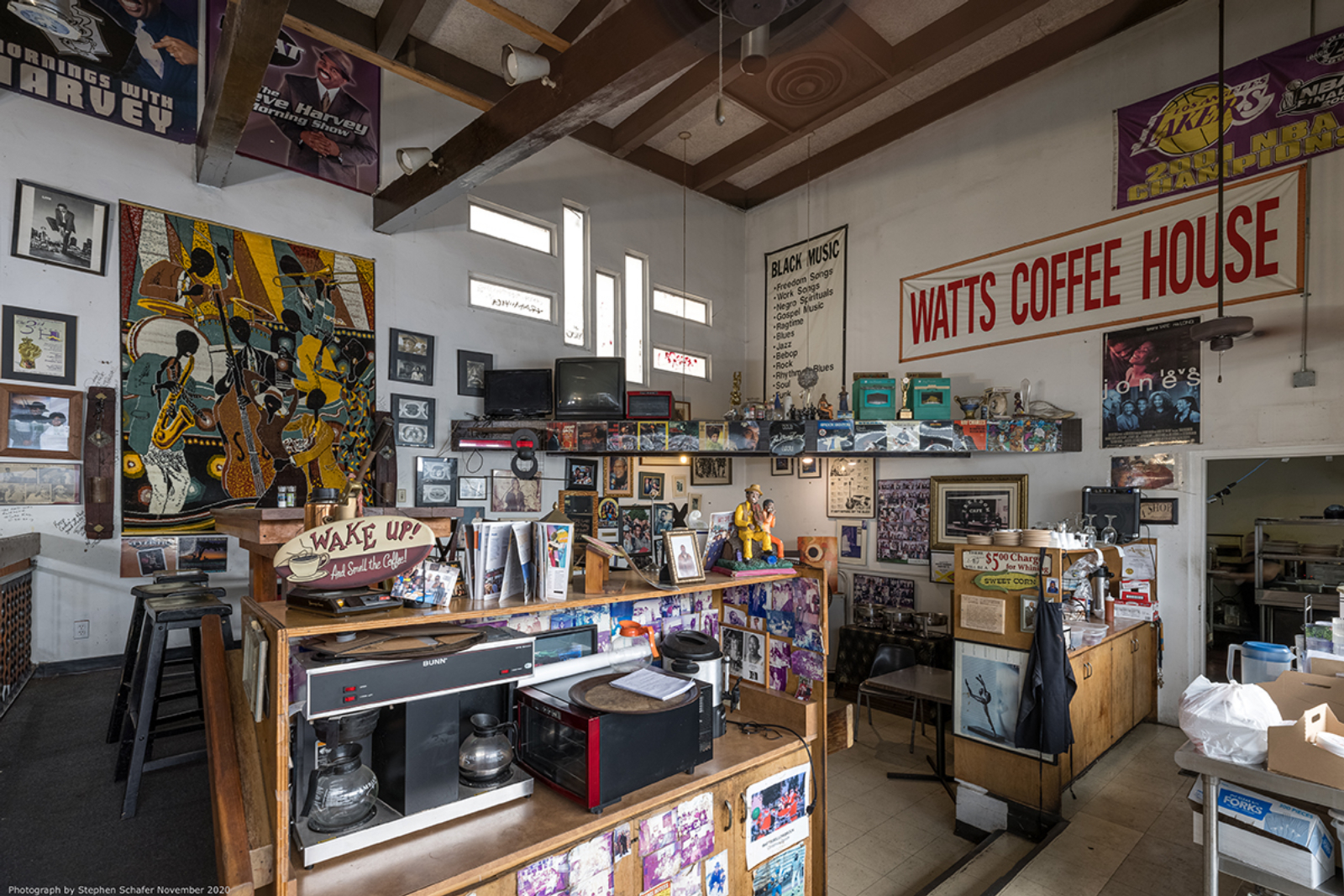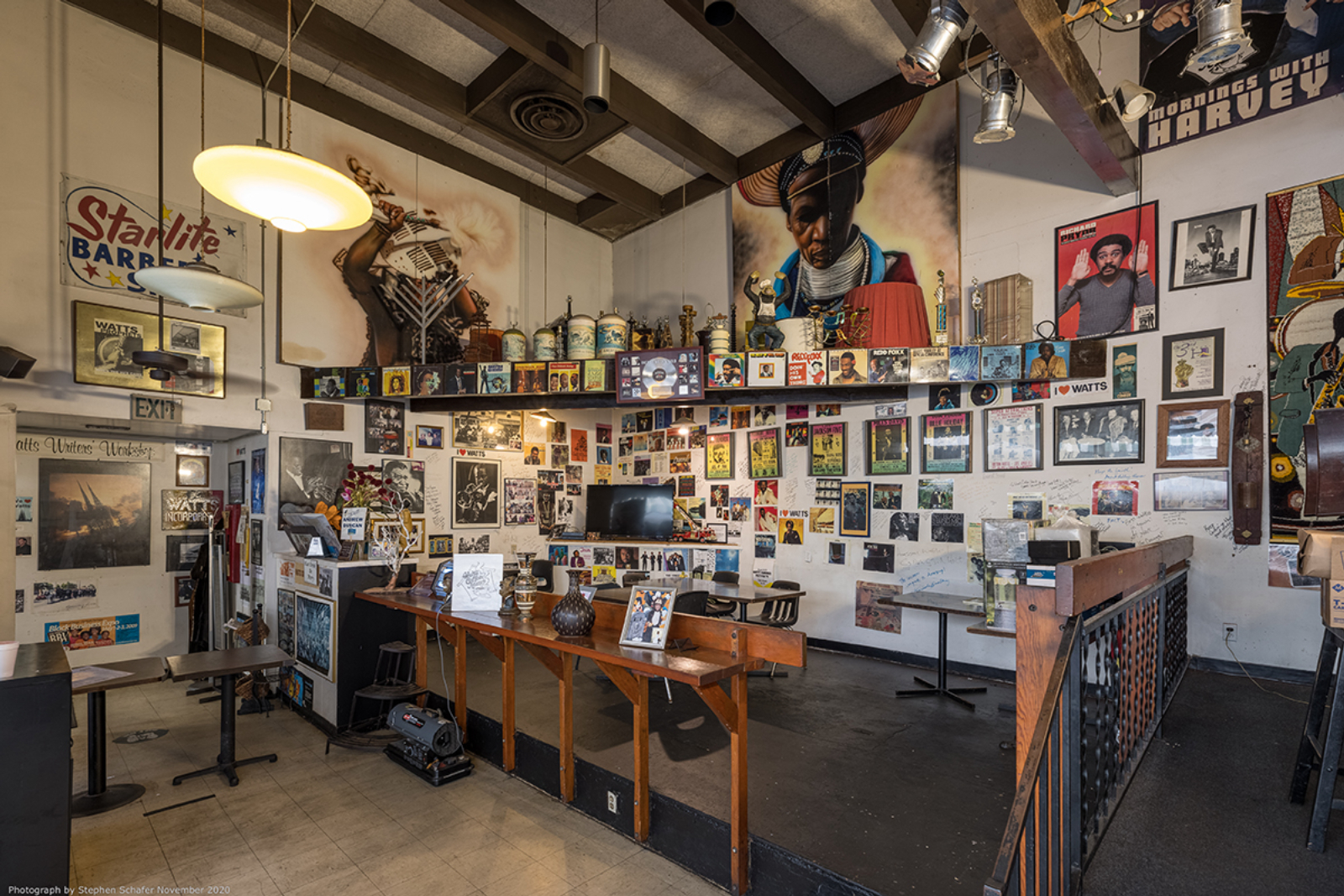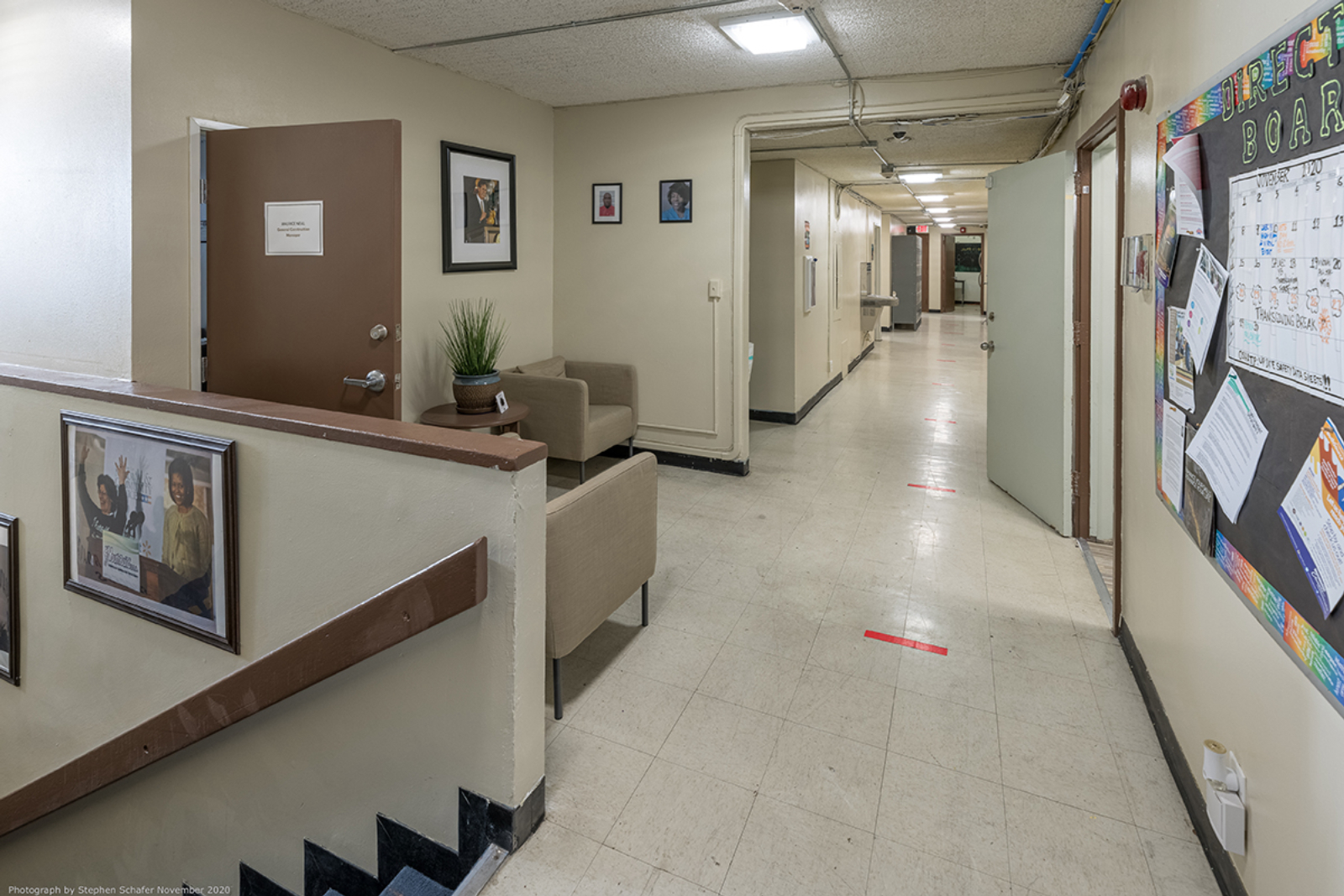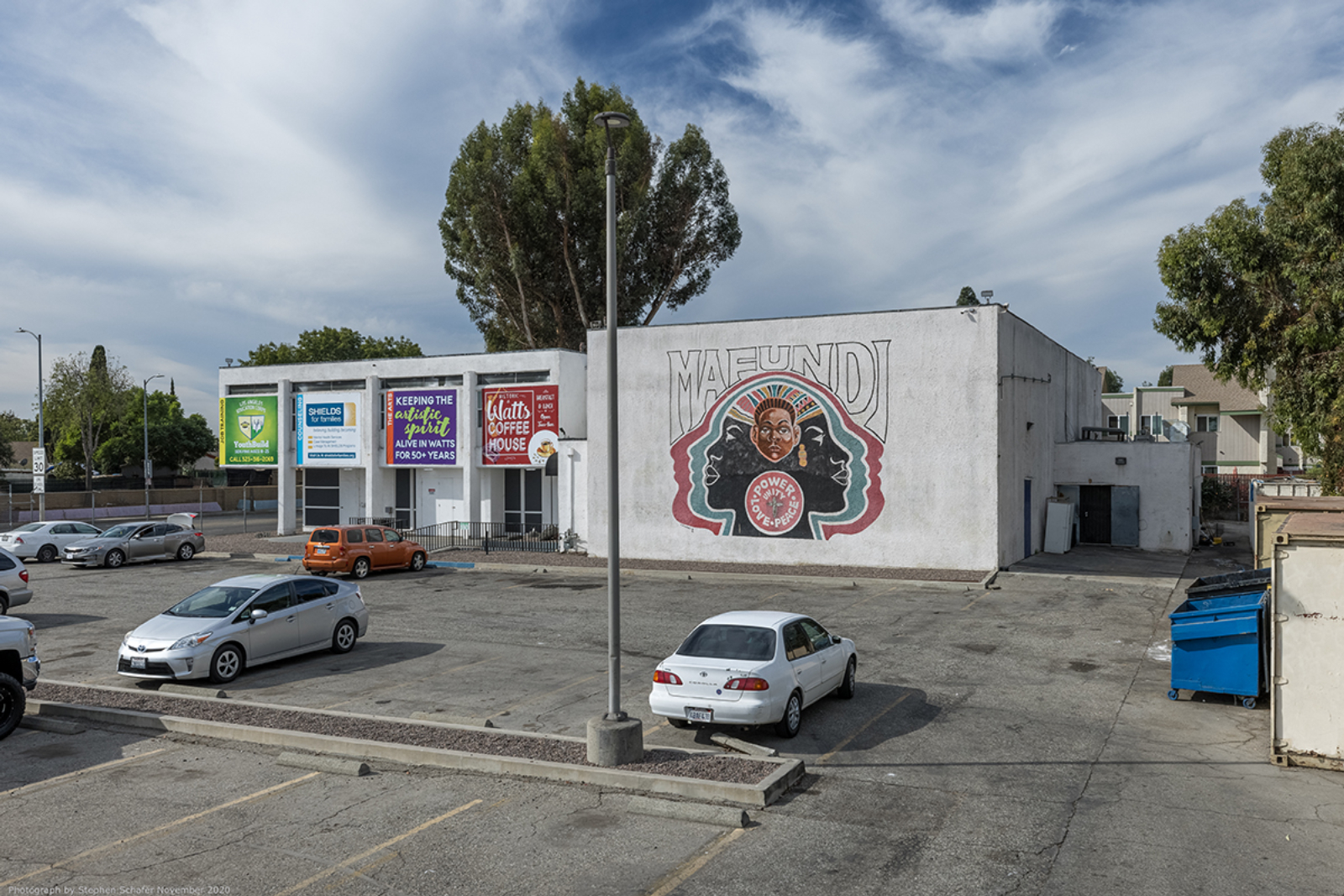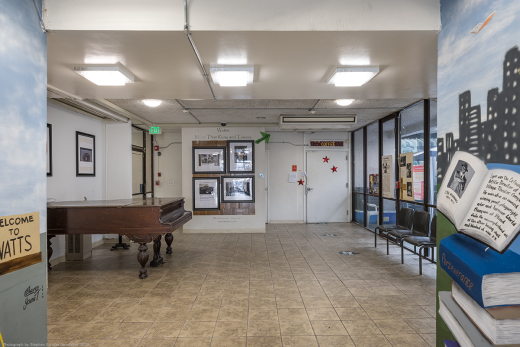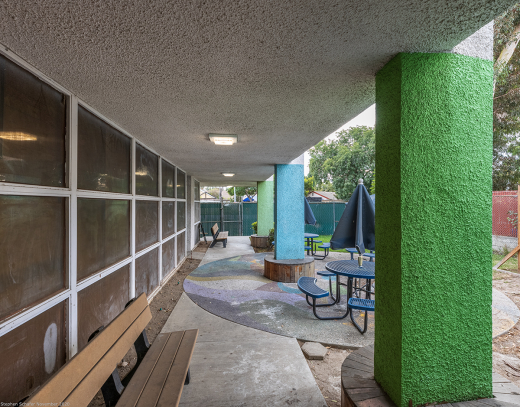Awards
Advocacy
Special Citation
Civic
The jury awards a Special Citation for Grassroots Initiative to Friends At Mafundi (F.A.M.), a coalition that seeks to sustain the history, culture and tradition of the Watts neighborhood, for their efforts to save the Mafundi Building. The two-story, white stucco structure was designed by prominent Los Angeles-based Black architects Arthur “Art” Silvers and Robert Kennard in 1969-70 as part of neighborhood revitalization efforts after the 1965 Watts Rebellion. In 1972, artist Elliott Pinkney added a powerful mural for the Mafundi Institute symbolizing the spirit of a resilient community. The building has been an anchor for many cultural and social service organizations over the years. F.A.M. formed in February 2020 in response to a request for proposals issued by the City of Los Angeles that left the Mafundi building open to demolition. F.A.M. raised awareness of the issue through online petitions, word of mouth, and social media. They encouraged supporters to submit comments to LA City Council. Rita Cofield, F.A.M. member and University of Southern California Master of Heritage Conservation alum, prepared a Historic-Cultural Monument application. At the Cultural Heritage Commission meeting in April 2021, numerous public comments were heard in support of the designation, and the Commission voted unanimously to landmark the site and cancel the RFP. The landmark process is still ongoing, and Docomomo US is pleased to recognize the success of the efforts thus far and to emphasize the need to preserve modern sites by Black designers and other underrepresented communities.
applauded the “ability to put pressure on local agencies and make a difference in saving this building.”
Advocates: Friends At Mafundi
Location
Watts Happening Cultural Center
1827 East 103rd StreetLos Angeles, CA
Country
90002
Case Study House No. 21
Lorem ipsum dolor
Designer(s)
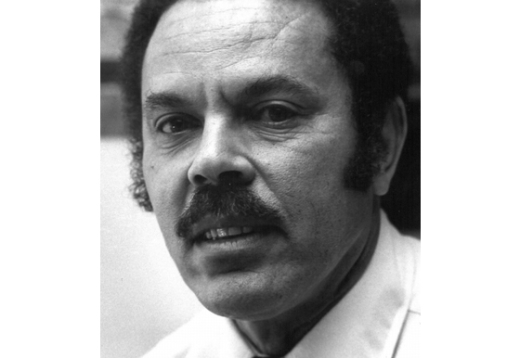
Robert Kennard
Architect
Robert Alexander Kennard, FAIA, was born in Los Angeles and founded his firm here in 1957. He began with residential design and completed some 40 residences through the early 1960s. One of his first homes, the Zeiger Residence, has been designated as a City of Los Angeles Cultural-Historic Monument. But in the mid-1960s he shifted his practice to public work.
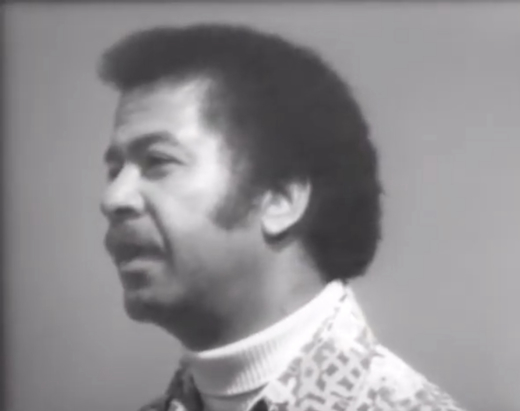
Arthur "Art" Silvers
Architect
Arthur Silvers was a partner of Kennard and Silvers, the first Black architecture firm in Los Angeles. He was from a generation of post World War II architects whose work demonstrated a break from traditional European influences. Silvers and Kennard were modernists -- influenced by Richard Neutra and Victor Gruen. Silvers was the Historian and Parliamentarian for the National Organization of Minority Architects (NOMA) in the 1970s. He and Kennard attended the USC School of Architecture and were both members of Scarab (Architecture Fraternity). (Source: LA Conservancy)
Other designers
Elliott Pinkney, mural artist
